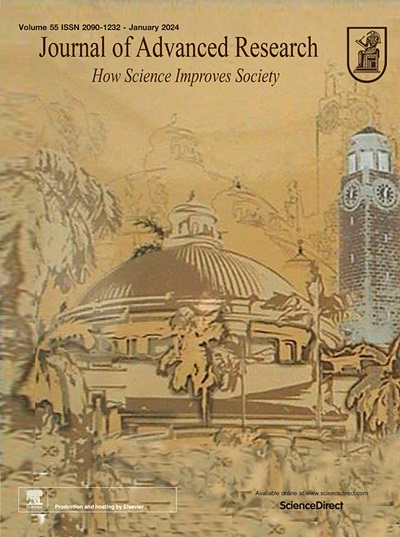NDRG1 enhances the sensitivity to Cetuximab by promoting Stat1 ubiquitylation in colorectal cancer
IF 11.4
1区 综合性期刊
Q1 MULTIDISCIPLINARY SCIENCES
引用次数: 0
Abstract
Introduction
Cetuximab (CTX) is an effective targeted drug for the treatment of metastatic colorectal cancer, but it is effective only in patients with wild-type KRAS genes. Even in this subset of patients, the sensitivity of CTX in patients with right hemi-colon cancer is much lower than that in patients with left hemi-colon cancer. This significantly limits its clinical application. Therefore, further elucidation of the underlying molecular mechanisms is needed. N-myc downstream-regulated gene 1 (NDRG1) plays an important role in solid tumor invasion and metastasis, but whether it can influence CTX sensitivity has not been thoroughly investigated.
Objective
Our study aimed to identify a novel mechanism by which NDRG1 affects CTX sensitivity.
Methods
Through mass spectrometry analysis of our previously constructed CTX-resistant RKO and HCT116 cells, we found that the signal transducer and activator of transcription-1 (Stat1) might be a potential target of NDRG1. By knocking out NDRG1 or/and Stat1 genes, we then applied the loss-of-function experiments to explore the regulatory relationship between NDRG1 and Stat1 and their roles in the cell cycle, epithelial-mesenchymal transition (EMT), and the sensitivity to CTX in these two colorectal cancer (CRC) cells. Finally, we used the nude-mouse transplanted tumor model and human CRC samples to verify the expression of NDRG1 and Stat1 and their impact on CTX sensitivity in vivo.
Results
Stat1 was upregulated in CTX-resistant cells, whereas NDRG1 was downregulated. Mechanically, NDRG1 was inversely correlated with Stat1 expression. It suppressed CRC cell proliferation, migration, and invasion, and promoted apoptosis and epithelial-mesenchymal transition (EMT) by inhibiting Stat1. In addition, NDRG1 directly interacted with Stat1 and promoted Smurf1-induced Stat1 ubiquitination. Importantly, this novel NDRG1-dependent regulatory loop also enhanced CTX sensitivity both in vitro and in vivo.
Conclusion
Our study revealed that NDRG1 enhanced the sensitivity to Cetuximab by inhibiting Stat1 expression and promoting its ubiquitination in colorectal cancer, elucidating NDRG1 might be a potential therapeutic target for refractory CTX-resistant CRC tumors. But its clinical value still needs to be validated in a larger sample size as well as a different genetic background.

NDRG1 通过促进 Stat1 泛素化增强结直肠癌患者对西妥昔单抗的敏感性。
简介西妥昔单抗(CTX)是治疗转移性结直肠癌的有效靶向药物,但它仅对野生型 KRAS 基因患者有效。即使在这部分患者中,右半结肠癌患者对 CTX 的敏感性也远低于左半结肠癌患者。这大大限制了其临床应用。因此,需要进一步阐明其潜在的分子机制。N-myc下游调控基因1(NDRG1)在实体瘤的侵袭和转移中发挥着重要作用,但它是否能影响CTX的敏感性尚未得到深入研究:我们的研究旨在找出NDRG1影响CTX敏感性的新机制:方法:通过对之前构建的CTX耐药RKO和HCT116细胞进行质谱分析,我们发现信号转导和激活转录-1(Stat1)可能是NDRG1的潜在靶点。通过敲除 NDRG1 或/和 Stat1 基因,我们利用功能缺失实验探索了 NDRG1 和 Stat1 之间的调控关系,以及它们在这两种结直肠癌细胞的细胞周期、上皮-间质转化(EMT)和对 CTX 的敏感性中的作用。最后,我们利用裸鼠移植肿瘤模型和人类 CRC 样本验证了 NDRG1 和 Stat1 在体内的表达及其对 CTX 敏感性的影响:结果:Stat1在CTX耐药细胞中上调,而NDRG1下调。从机制上看,NDRG1与Stat1的表达成反比。它通过抑制Stat1抑制了CRC细胞的增殖、迁移和侵袭,促进了细胞凋亡和上皮-间质转化(EMT)。此外,NDRG1还能直接与Stat1相互作用,促进Smurf1诱导的Stat1泛素化。重要的是,这种新型的 NDRG1 依赖性调控环路还增强了 CTX 在体外和体内的敏感性:我们的研究发现,NDRG1通过抑制Stat1的表达并促进其泛素化,增强了结直肠癌患者对西妥昔单抗的敏感性。但其临床价值仍需在更大样本量和不同遗传背景下进行验证。
本文章由计算机程序翻译,如有差异,请以英文原文为准。
求助全文
约1分钟内获得全文
求助全文
来源期刊

Journal of Advanced Research
Multidisciplinary-Multidisciplinary
CiteScore
21.60
自引率
0.90%
发文量
280
审稿时长
12 weeks
期刊介绍:
Journal of Advanced Research (J. Adv. Res.) is an applied/natural sciences, peer-reviewed journal that focuses on interdisciplinary research. The journal aims to contribute to applied research and knowledge worldwide through the publication of original and high-quality research articles in the fields of Medicine, Pharmaceutical Sciences, Dentistry, Physical Therapy, Veterinary Medicine, and Basic and Biological Sciences.
The following abstracting and indexing services cover the Journal of Advanced Research: PubMed/Medline, Essential Science Indicators, Web of Science, Scopus, PubMed Central, PubMed, Science Citation Index Expanded, Directory of Open Access Journals (DOAJ), and INSPEC.
 求助内容:
求助内容: 应助结果提醒方式:
应助结果提醒方式:


